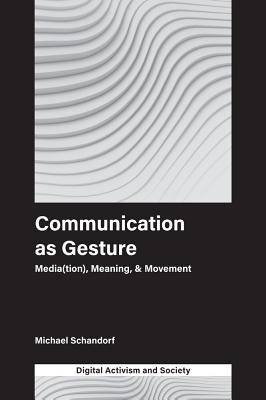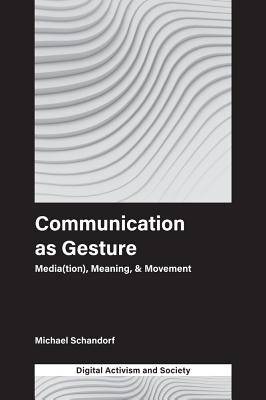
Je cadeautjes zeker op tijd in huis hebben voor de feestdagen? Kom langs in onze winkels en vind het perfecte geschenk!
- Afhalen na 1 uur in een winkel met voorraad
- Gratis thuislevering in België vanaf € 30
- Ruim aanbod met 7 miljoen producten
Je cadeautjes zeker op tijd in huis hebben voor de feestdagen? Kom langs in onze winkels en vind het perfecte geschenk!
- Afhalen na 1 uur in een winkel met voorraad
- Gratis thuislevering in België vanaf € 30
- Ruim aanbod met 7 miljoen producten
Zoeken
Omschrijving
While the concept of communication has long been bound to a reductive model of the exchange of information, very few scholars of communication would argue that these assumptions are realistic, without a long list of qualifying caveats. But the concept of communication, built from the integration of semiotic signification with the idea of information as the 'carrier' of transmitted meaning, is so deeply ingrained and simple that even displacing it can seem futile, if not absurd. Nevertheless, these foundational assumptions tightly constrain the ways in which any interactional phenomena can be conceived--and constraints upon our ways of understanding communication drastically limit our capacity to understand our worlds and the social processes that generate them, at any scale or level of abstraction.
Communication as Gesture traces the concept of communication from its roots in classical rhetoric to its integration in structural linguistics, semiotics, information theory, and cybernetics, integrating perspectives from contemporary rhetorical theory, relational psychology, interactional sociology, philosophy, cognitive linguistics, discourse studies, multimodal semiotics, and more. Because so much of our contemporary world is lived with and through digital media technologies, the study of new media and social media provides a rich illustration of the constraints imposed by our reductive assumptions--and hints at the possibilities generated by rethinking them. The gesture theory of communication introduced presents a dimensional account of communication that is intuitively accessible and theoretically rich while overturning reductive assumptions of the linear character of interaction.
Communication as Gesture traces the concept of communication from its roots in classical rhetoric to its integration in structural linguistics, semiotics, information theory, and cybernetics, integrating perspectives from contemporary rhetorical theory, relational psychology, interactional sociology, philosophy, cognitive linguistics, discourse studies, multimodal semiotics, and more. Because so much of our contemporary world is lived with and through digital media technologies, the study of new media and social media provides a rich illustration of the constraints imposed by our reductive assumptions--and hints at the possibilities generated by rethinking them. The gesture theory of communication introduced presents a dimensional account of communication that is intuitively accessible and theoretically rich while overturning reductive assumptions of the linear character of interaction.
Specificaties
Betrokkenen
- Auteur(s):
- Uitgeverij:
Inhoud
- Aantal bladzijden:
- 304
- Taal:
- Engels
- Reeks:
Eigenschappen
- Productcode (EAN):
- 9781787565166
- Verschijningsdatum:
- 19/06/2019
- Uitvoering:
- Hardcover
- Formaat:
- Genaaid
- Afmetingen:
- 157 mm x 231 mm
- Gewicht:
- 476 g

Alleen bij Standaard Boekhandel
+ 338 punten op je klantenkaart van Standaard Boekhandel
Beoordelingen
We publiceren alleen reviews die voldoen aan de voorwaarden voor reviews. Bekijk onze voorwaarden voor reviews.









